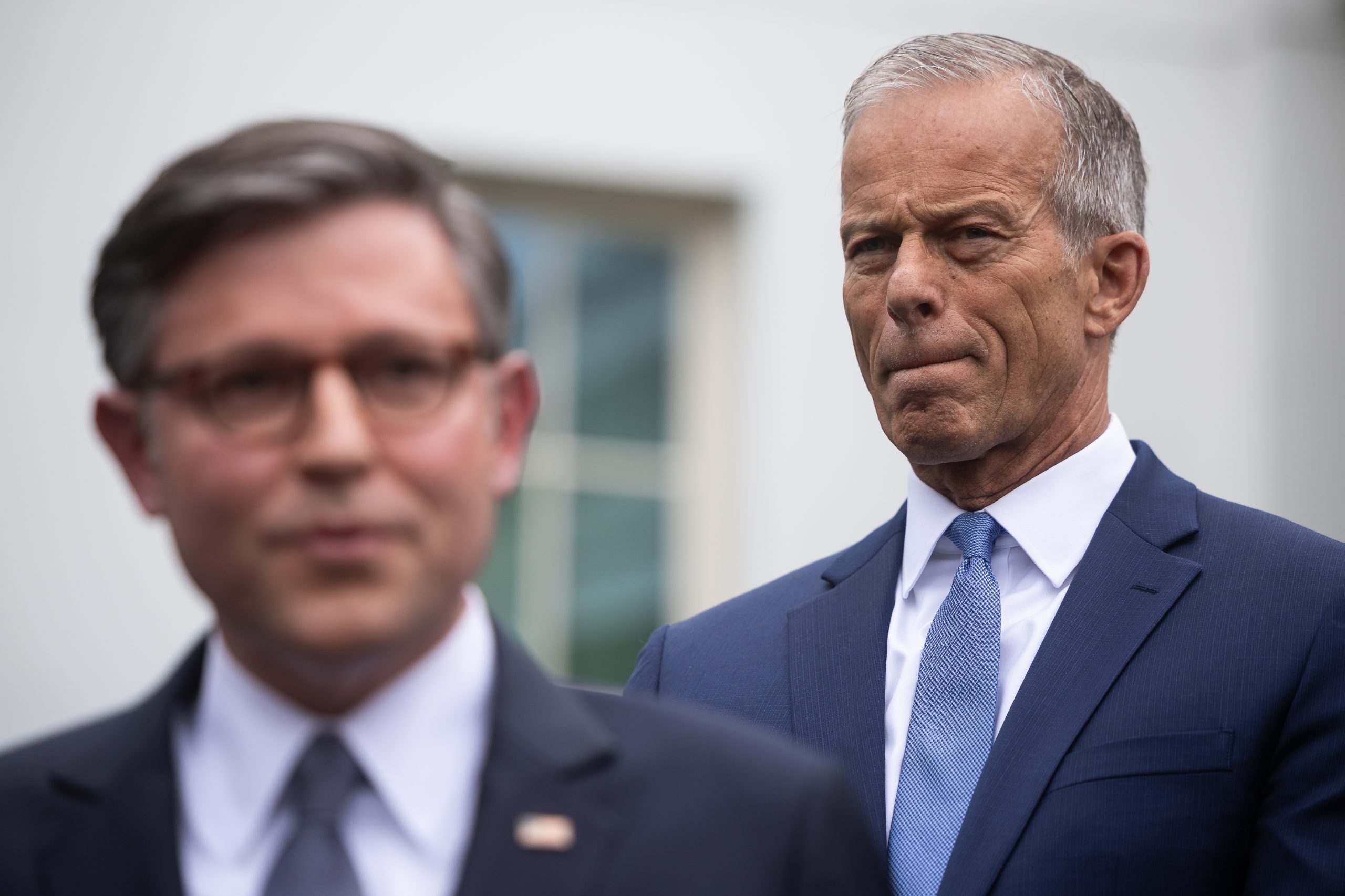A government shutdown is now all but inevitable.
Senators rejected dueling spending stopgap bills on Tuesday, including aHouse-passed continuing resolution that was the final off-ramp to avoid a government shutdown set to start at 12:01 a.m. Wednesday.
There’s no sign of any further breakthrough that could avert a shutdown before midnight — and even if there was, it would be next to impossible for lawmakers to act on it. Quick Senate action would require the consent of all 100 senators, and passing anything other than the House-approved CR would require the other chamber to act.
Speaker Mike Johnson sent his members home until Monday in a bid to pressure the Senate to swallow what the House already passed: a seven-week punt.
Faced with the impasse, lawmakers and the White House spent Tuesday trading barbs over who was to blame for the first government closure since 2019.
Senate Majority Leader John Thune said ahead of the vote that Democrats would “have the same leverage on Nov. 21,” when the House-passed measure expires: “This is a short-term CR, this is the same thing we do all the time, it funds the government until Nov. 21.”
Minority Leader Chuck Schumer, however, quickly retorted that Thune “did not come to me one time to say, ‘Is this bill acceptable? What do you want in the bill?’ They call it bipartisan. It is not. That is not how you negotiate. That is not how you pass appropriations bills.”
Just as party leaders were unable to find a mutually agreeable off-ramp ahead of the shutdown, they aren’t anywhere close to an agreement on how to get out of it.
Senate Republicans believe they have the upper hand because they are asking for Democrats to vote on a “clean” short-term punt — similar to proposals Democrats have supported in the past. They were encouraged Tuesday when the House-passed bill failed on the Senate floor in an 55-45 vote Tuesday — with three Democrats voting for it.
That was a better showing for the GOP than in a prior vote 11 days ago, when Pennsylvania Sen. John Fetterman was the only Democrat to join with Republicans. This time Nevada Sen. Catherine Cortez-Masto and Maine Sen. Angus King, an independent who caucuses with Democrats, joined him. Kentucky Sen. Rand Paul was the only Republican voting no.
“We should be working on bipartisan solutions to address the global health care crisis, but that doesn’t mean we should be swapping harm from one group of Americans to another,” Cortez-Masto told reporters amid the vote.
Trump is warning he will make the shutdown particularly painful for Democrats, with GOP lawmakers expecting blue states to be hardest hit given the flexibility the administration has in determining what federal agencies and programs are essential.
“We can do things during the shutdown that are irreversible, that are bad for them and irreversible by them — like cutting vast numbers of people out, cutting things that they like, cutting programs that they like,” Trump warned Tuesday in the Oval Office.
The president even suggested that medical programs and benefits could be casualties of the shutdown. “We can cut large numbers of people out,” Trump said, even though programs like Medicaid and Medicare are funded permanently and can continue operating during a shutdown.
White House Budget Chief Chief Russ Vought has also threatened toengage in mass layoffs of federal workers during a shutdown, in addition to the usual temporary furloughs.
Responding to a letter from Sen. Joni Ernst (R-Iowa), the Congressional Budget Officeestimated Tuesday that about 750,000 employees could be furloughed each day and that the total daily cost of their compensation would be roughly $400 million. The nonpartisan scorekeeper previously estimated that about $3 billion in lost real GDP would never be recovered after the record 35-day government shutdown that ended in 2019.
House Democrats returned to Washington Monday to draw a contrast with the House GOP’s absence. Democratic leaders are planning a full-bore messaging campaign through the week with multiple daily news conferences and events, focused on their demand for a bipartisan negotiation over health care.
Before voting down the House-passed stopgap Tuesday evening, the Senate again defeated a counterproposal from Democrats that would fund the government through Oct. 31 and reverse $1 trillion in cuts to Medicaid from the GOP tax and spending megabill, while also permanently extending Affordable Care Act subsidies that are set to expire.
TheDemocrats’ bill would also restrict the president’s authority to withhold congressionally approved funding — akey fault line for many Democrats, who are not inclined to ink any spending deal with Republicans if Trump can simply not adhere to it.
While Senate Republicans have signaled support for negotiating on the ACA credits — a few of them have even endorsed a one-year extension — they believe any deal has to wait until after the government reopens.
This is the second time in a matter of weeks that both short-term funding bills have been voted on by the Senate, and failed. Senate Democrats used a closed-door lunch on Tuesday to discuss what would come next after the dueling stopgap bills failed.
Thune said he expected to hold yet another vote Wednesday on the GOP bill to continue putting pressure on Democrats to blink.
“At some point, they’re just going to need to keep voting it down,” he told reporters. “There are ways to trigger those votes. And we’ll keep looking for those opportunities. So they’ll get the opportunity to vote.”
Cassandra Dumay and Calen Razor contributed to this report.
